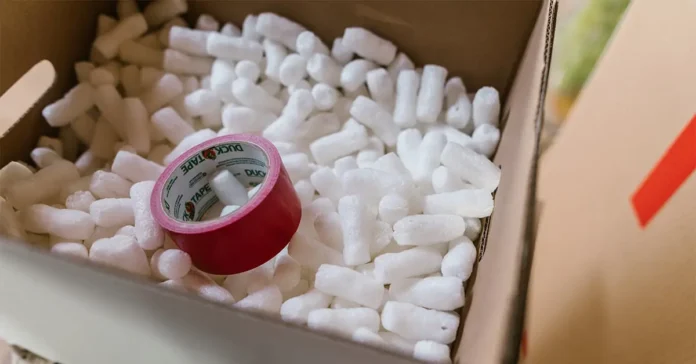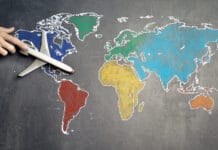Moving can be an exciting adventure, but the process of wrapping and packing can often seem daunting. We understand the challenges of moving, and that’s why we’re here to simplify the packing process. Whether you’re a first-time mover or a seasoned pro, our guide provides valuable insights, practical tips, and a touch of magic to make your packing experience efficient and enjoyable.
Starting with the classic favorite, bubble wrap, we’ll explore its magic in safeguarding fragile items. From sturdy boxes to versatile packing paper, we’ve got you covered. Each packing material serves a unique purpose, ensuring that your belongings are not only protected but also organized for a seamless transition to your new space.
So, buckle up and join us on this journey through the world of wrapping and packing materials. Let’s turn the often-overwhelming task of packing into a well-organized, stress-free adventure. Your smooth move begins here!
Need of Wrapping and Packing Materials
In the world of moving and shipping, the need for wrapping and packing materials is growing. These materials play an important role in ensuring the safety and security of your belongings. The need grows not just for physical protection but also for organization – proper packing materials make the entire process smoother and more efficient. It’s not just about moving things; it’s about moving them with care and precision.
So, whether you’re relocating to a new home or sending a gift to a friend, understanding the importance of these materials ensures that your items arrive at their destination unscathed and ready for their next adventure.
Here are the 10 wrapping and packing materials that are helpful to you when you are moving into a new apartment or keeping a few belongings in storage.
1. Cardboard Boxes
Any moving process would be incomplete without this versatile packaging material! They are made of a single layer of heavy paper pulp on a sheet. Corrugated cardboard boxes are the most used and long-lasting packaging materials for long-distance moves. They are specifically designed for the shipping and packaging of delicate products. It is highly preferred by moving companies because it is simple to load and unload. You can use them to pack anything, from electronics to clothes to utensils.
2. Bubble Wrap
While moving, there is always the risk of breakage. For your fragile and delicate items, you should use appropriate packaging materials. Because bubble wrap is an excellent insulator against impacts, it protects your valuable items from damage while moving. The bubbles of sealed air act as a cushion, preventing the object from breaking.
PS: We all love to pop the air bubbles and no you can, but only after unpacking. It is the most enjoyable activity and is thought to be an additional stress reliever during the moving period!
3. Wrapping Paper
Have you ever wondered why a vase or a set of wine glasses came wrapped in brown paper? Packing paper (or unprinted newsprint) turns out to be a favourite among movers. (Indeed, even more than bubble wrap.)
“Professional packers use unprinted newsprint, which is biodegradable and eco-friendly,” says Jennifer Doran, Liberty Moving and Storage’s vice president of sales and marketing. This is not only an environmentally friendly option, but it also gets the job done.
4. Packing Foam
It reduces the possibility of damage during transportation; regardless of how rough the handling is, packing foam protects the item from breakage. Packing foam is an important packaging material for fragile items. It is even lighter than bubble wrap and can be used to pack electronics, ceramics, glass, and other fragile items.
5. Packing Tape and Dispenser
You may be wondering why packing tape is considered an essential moving packaging material. Packing tape is used to secure and seal items packed in corrugated cardboard boxes. There will be no security for the goods without strong packing tape. During the moving process, the boxes may burst open, increasing the likelihood of damage.
When tapping a box, a tape dispenser comes in handy and saves a lot of time. The large handle with a self-cutting mechanism evenly applies tape to the box and cuts it properly. Scissors and a cutter are used to cut bubble wrap, cargo-rated sheets, and other packing material. These tools are extremely useful and are required in every packing situation.
6. Packing Labels and Marker Pens
Labels and makers are not the most important type of packaging materials, but they can help organise and relax your move. You can label and mark your boxes. It will make your job much easier when moving furniture. Moving can be chaotic but labelling the boxes can save you a lot of time and effort while loading and unloading. Use thick labels and markers to ensure that they are clearly visible and do not wear off during the moving process.
7. Moving Blankets
We always take exceptional care of our fragile and delicate items when moving. However, large, and bulky items such as furniture and home appliances may break during the moving process. Moving blankets (also known as furniture padding) serve as a cover and protect the item from breakage. It is shaped like a blanket and has the appearance of a thick padded quilt. Moving blankets wrap the items and protect them from damage in the same way that a blanket covers you and provides warmth.
8. Rope
Ropes are important packaging materials for both loading and unloading. It is useful for transporting heavy objects to multiple floors. It may not be useful during the packing process, but a rope is essential for emergencies and dangerous situations.
9. Furniture and Mattress Covers
Furniture protection includes bed mattress covers, settee, sofa, and armchair covers, as well as dining room chair plastic bags, which stop moisture and dust and help protect your furniture from damage while being transported.
While being transported, the plastic cover protects your mattress from dust, dirt, moisture, spills, and even odours. If your moving company fails to thoroughly clean their truck, it prevents pests such as bed bugs from infesting the fibres.
They also provide peace of mind on a stressful day. You can arrive at your new home after a long day of moving knowing that your bed is clean, dry, and pest-free, ready for you to jump into and rest.
10. Rubbish Bin and Bags
Last but not the least, packing all your belongings into boxes, bags, and other containers can be overwhelming. Make things easier on yourself by reducing clutter as much as possible. Have a rubbish bin ready!
Perform a ruthless purge of unused or unnecessary items before packing a single box. You will have less to pack, move, and unpack, and you will be able to start fresh in your new home.
You can also use garbage bags to pack up items in your home. Using garbage bags as packing materials when moving is a clever way to save money. However, swapping moving boxes for trash bags is only recommended for local moves of loose, unbreakable items. A long journey necessitates greater attention to the safety of your belongings if you are to receive them all in one piece.
It is understood that clean litter bags should always be used. However, you should also consider the quality and size of the moving bag you select.
Final Words
Packing is an essential part of the moving process! From the whimsical protection of bubble wrap to the sturdy reliability of boxes, every material serves a unique purpose in making your move smooth and secure. Embrace the art of packing, and let the variety of materials available be your creative toolkit. Whether it’s the simplicity of tape or the durability of containers, each element contributes to the symphony of a successful relocation.
So, wrap up your items with care, pack them snugly in boxes, and embark on your moving adventure with confidence, knowing that you’ve mastered the essential dance of packing materials. Happy moving!
FAQs
A: Bubble wrap provides cushioning and protection, preventing damage to fragile items during transit by absorbing shocks and impacts.
A: Yes, bubble wrap is reusable as long as it remains in good condition. Simply store it carefully after each use.
A: Boxes are versatile and suitable for various items, including clothes, books, kitchenware, and small household items.
A: Select boxes that fit the size of your items snugly, minimizing empty spaces to prevent shifting during transportation.
A: Yes, newspaper can be used for wrapping non-fragile items, providing an additional layer of protection and filling empty spaces in boxes.
A: Yes, plastic bags are suitable for packing clothing, linens, or soft goods to keep them clean and organized.
A: Use specialty dish boxes with dividers, wrap each item in packing paper or bubble wrap, and ensure a snug fit within the box.
A: Yes, consider using biodegradable packing peanuts, recycled cardboard boxes, and reusable materials for a more sustainable packing approach.
A: Yes, old blankets or towels can provide additional padding and protection for delicate items, especially when placed between them in boxes.
A: Clearly label each box with its contents and destination room to facilitate a smooth unpacking process and help prevent any mishandling during transit.








